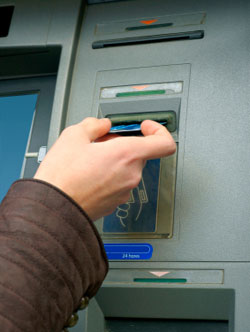 |
 |
 |
 |
 |
 |
 |
 |
Merchant Account TypesMerchant Account ProvidersNews & AdviceMerchant Account Tools |
 Print Print  Email Email MasterCard urges ATM owners to upgrade to EMV technologyIn an effort to reduce fraud, MasterCard is urging U.S. ATM owners to upgrade their ATMs by 2013 so that they accept "smart cards" with EMV technology, according to Aite Group, a financial services advisory firm. 
Smart cards -- which are commonly referred to as chip-and-PIN cards -- contain embedded microprocessor chips that offer transaction security features not available with traditional magnetic stripe cards. The cards are already in use outside the U.S., including Canada, Europe, Latin America and Asia. Member bank ATM owners who do not add hardware for accepting EMV chip card payments by MasterCard's April 2013 deadline will bear the full liability for fraudulent activities, reports Aite. Aite also reports that upgrading to the new hardware is expected to cost ATM owners between $2,000 and $4,000. Based in Britain, EMVCo, which oversees the implementation of EMV technology, is owned by American Express, MasterCard, JCB International Card Co. and Visa. Approximately 80 countries are in various stages of converting to EMV chip use, according to EMVCo, and 18.7 million point-of-sale terminals accept chip-and-PIN cards as of Q1 2011, accounting for more than 71 percent of terminals installed globally.
Why chip and PIN? In the U.K., the UK Cards Association has reported a dramatic reduction in fraud since chip-and-PIN (EMV) cards were introduced in 2007.
Chip-and-PIN
cards can be used on any compatible terminal and offer a variety of security
advantages, including:
U.S. migration toward chip-and-PIN cards is beginning to accelerate As the usage and availability of EMV technology spreads, migration toward chip and PIN in the U.S. is expected to be less complicated than it would have been a decade ago, say experts. Moreover, the U.S. payments infrastructure is already an online environment and the technology is becoming less expensive. For more information about EMV cards, check out the Smart Card Alliance's Feb. 2011 white paper, "Card Payments Roadmap in the United States: How Will EMV Impact the Future Payments Infrastructure?". See related: Visa pushing EMV, merchant incentives; The major players in a credit card transactionPublished: September 14,2025Comments or Questions, Library of Stories
|
|||||||||||||